Color Identification Alphabet Worksheets for Ages 5-9
6 filtered results
-
From - To
Discover the perfect educational tool with our Color Identification Alphabet Worksheets for Ages 5-9! Designed to captivate young learners, these printable worksheets seamlessly blend letter recognition with color identification, fostering essential early education skills. Engaging activities encourage children to match letters with corresponding colorful images, enhancing their understanding of the alphabet while stimulating visual learning. Ideal for parents and educators, these worksheets offer a fun, interactive way to boost literacy and cognitive development. Watch as your child’s confidence and knowledge grow with each completed worksheet, turning learning into an exciting and rewarding journey. Download and print today from Kids Academy!
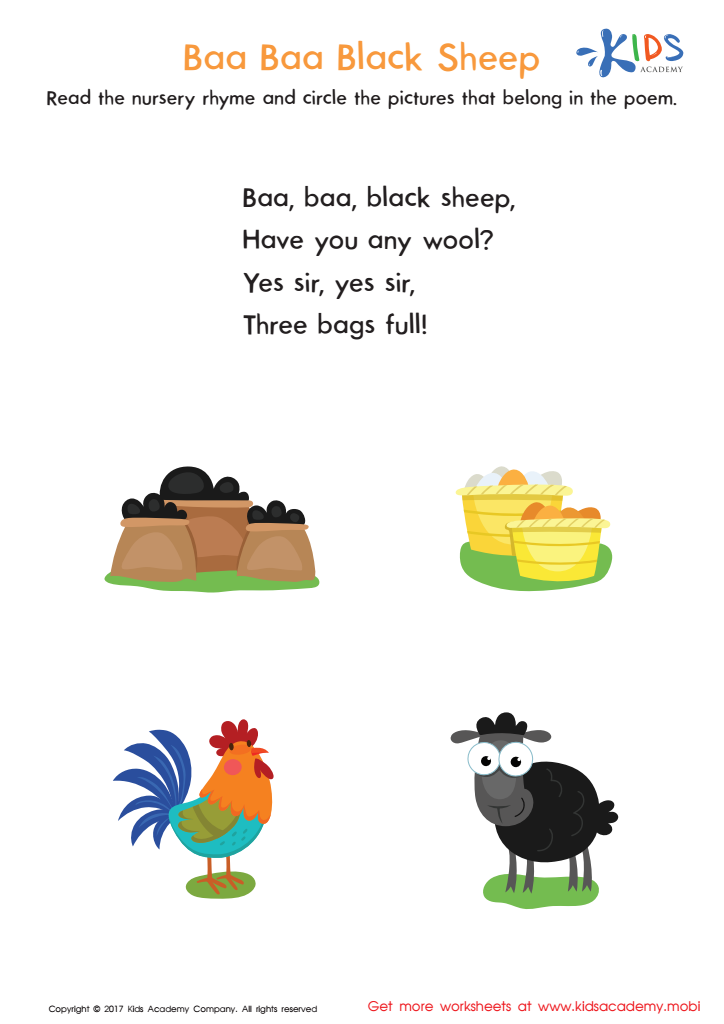

Baa Baa Black Sheep Printable
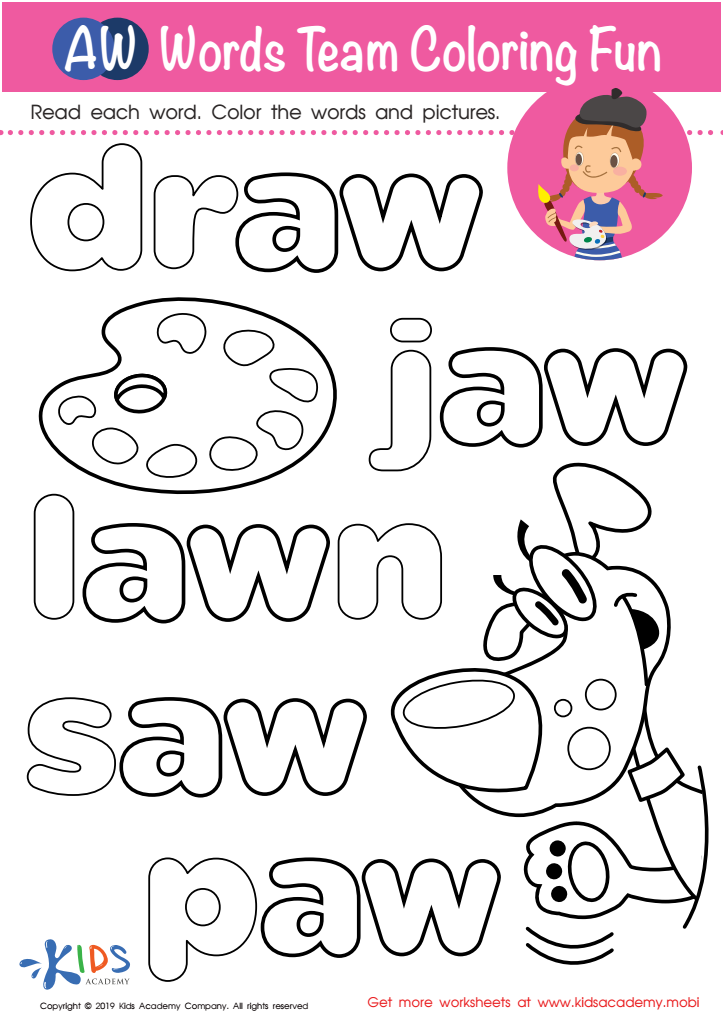

AW Words Team Coloring Fun Worksheet
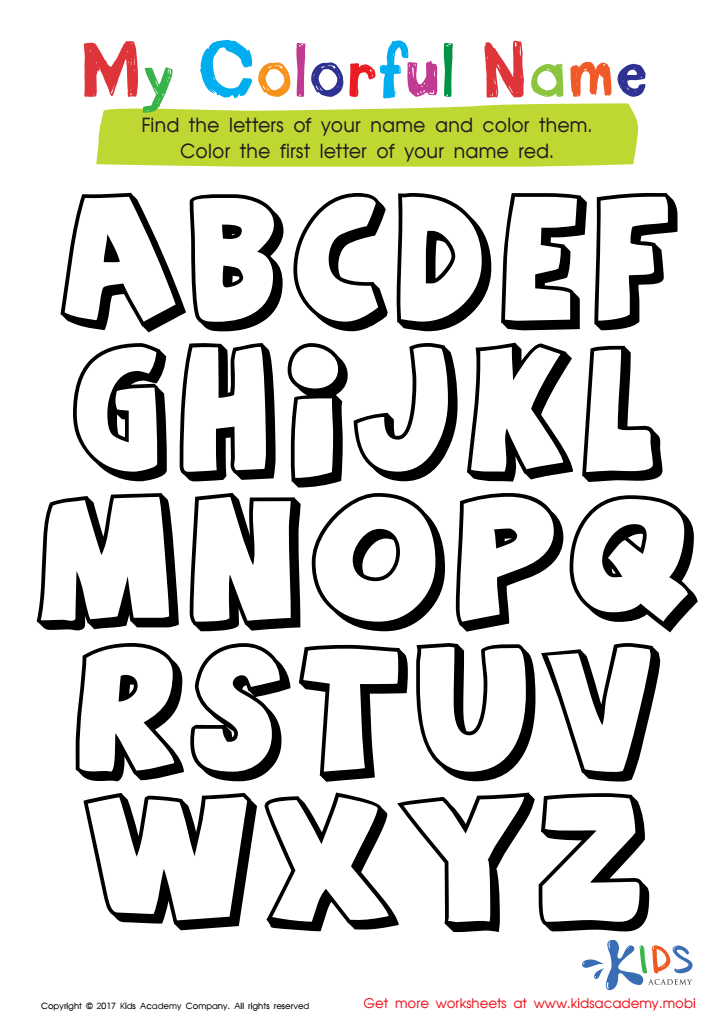

My Colorful Name Worksheet
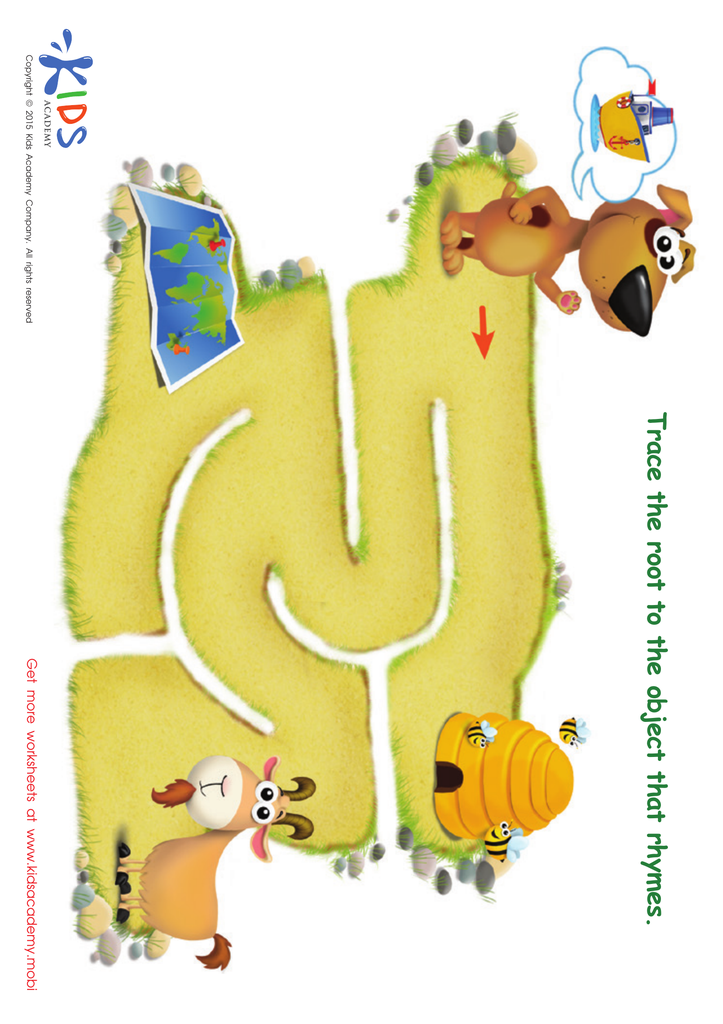

Boat Rhyming Words Worksheet
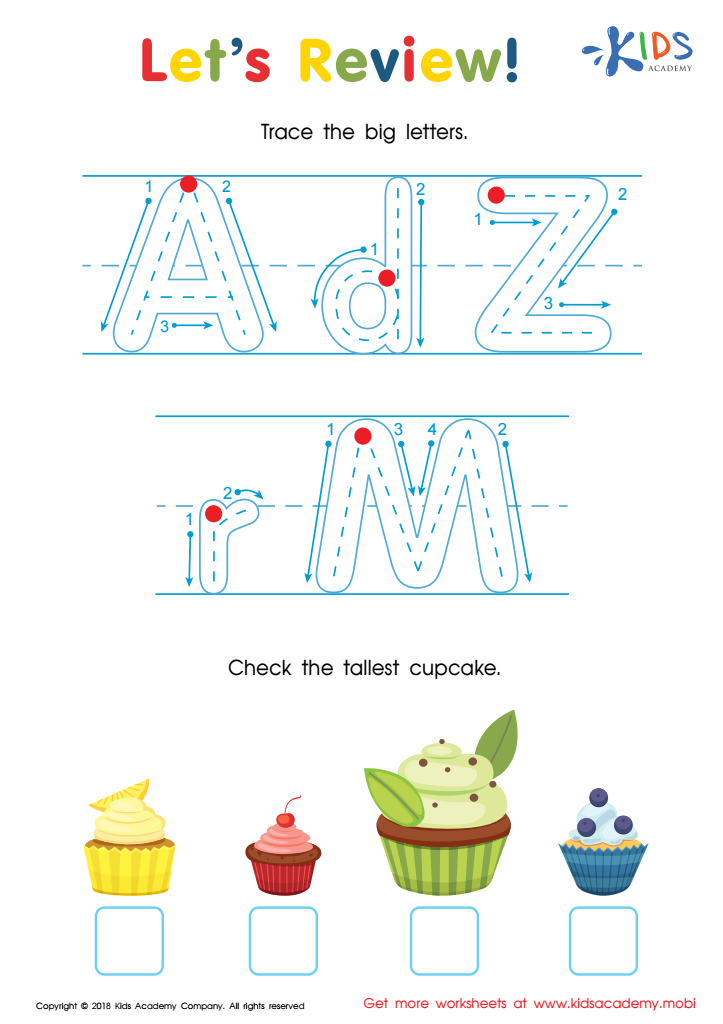

Let's Review! Big Letters Worksheet
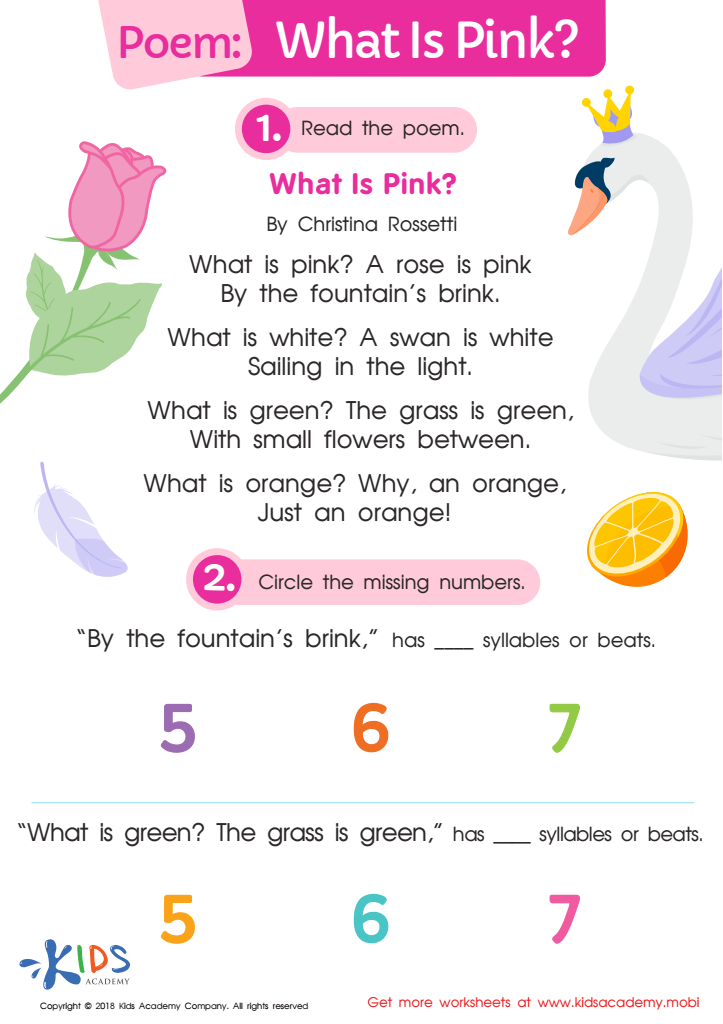

Poem: What Is Pink? Worksheet
Color Identification Alphabet is a vital learning tool for children ages 5-9 because it blends the engaging concept of color with foundational literacy skills. This holistic approach makes learning more enjoyable and memorable, enhancing a child's cognitive development and language acquisition. Introducing children to the alphabet through color not only aids in letter recognition but also reinforces words associated with specific colors, thereby improving their vocabulary and comprehension skills.
From a developmental perspective, the integration of color and letters stimulates multiple areas of the brain. This dual stimulation can foster improved memory retention, visual processing skills, and a more profound understanding of the written language. Hence, children can achieve a balanced blend of creativity and literacy, which can pave the way for lifelong learning habits.
For parents and teachers, using a Color Identification Alphabet helps to create a vibrant and dynamic educational experience. Different colors capture children's attention more effectively, keeping them engaged and motivated. Moreover, this multi-sensory approach encourages children to make connections between visual and linguistic information, facilitating smoother transitions from letter recognition to reading. Such methods cater to different learning styles, guaranteeing every child has the opportunity to succeed academically.
In essence, embracing Color Identification Alphabet can transform traditional learning into an interactive and inclusive experience, essential for the holistic development of young learners.
 Assign to My Students
Assign to My Students
















